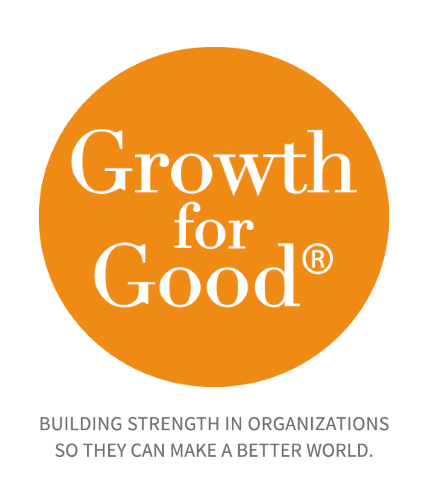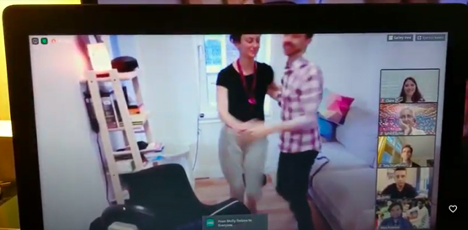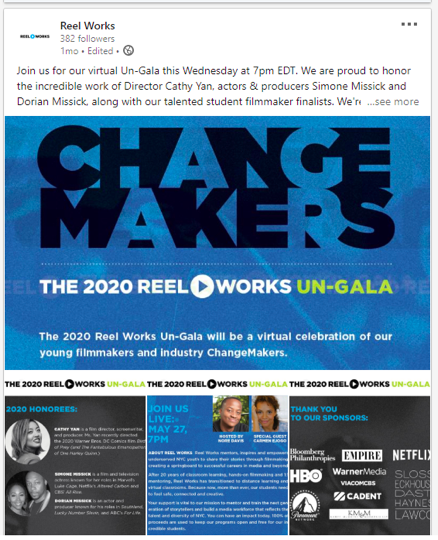Learning livestream fundraising best practices in real time
Let’s face it: 2020 and 2021 have not been good for, well, anybody. Yet those you serve are counting on you, probably now more than ever before. Meeting your fundraising goals has never been more pressing. Virtual events can play a critical role.
Due to COVID, fundraising events have been turned upside down. All in-person events have been canceled. Yet, everyone’s inboxes are flooded with “virtual event” invitations. The fact that “events” are still happening is proof that humans crave the kind of connection that we can experience at events. And, that there is money to be raised.
Learning livestream in real time
At Growth for Good, we produced our first virtual event in April, less than one month after the COVID shutdown in New York City. Since then, we have produced a half dozen other events with many more in the pipeline. One hundred percent of the virtual events we have produced to date have exceeded their original in-person fundraising goals. We have learned so much since that first event!
Like a traditional live fundraising event, a virtual fundraising event experience must provide authentic human connection and interaction. People need to meet each other and feel like part of a community. They must feel inspired by the mission and the impact of the organization. Ideally, they have a chance to explore interesting ideas and be entertained. They feel energized and experience audio, visual, and emotional dynamics. We aim for an impactful holistic experience.
15 best practices for livestream fundraising events
Here are 15 lessons I’ve learned that are essential to raising money and converting attendees into real participants.
- Start with the same fundraising strategies critical for a live virtual event:
- Differentiated sponsor levels
- Differentiated ticket prices
- Honorees, Co-Hosts, and Host Committee roles
- Create a compelling event brand (or stick to your past event brand) with a look and feel that is consistent across all print and digital assets. Develop a brand that can be used into the future—a brand that people recognize year after year when they receive the first save the date card. Take a page from the for-profit event world: You don’t see TED or SXSW changing their brand year to year.
A great example of compelling and cohesive live event branding. - Choose intuitive and easy-to-navigate designs:
- Event dashboard (the microsite where your virtual event takes place)
- Clear links to a combination of live program elements (which take place in Zoom Rooms) and links to short videos
- Social media share buttons
- And other elements that are continuously available throughout the evening.
We loved the WHEELS event website: Guests could decide whether to be in one of the Zoom Rooms or see one of the short films available for viewing throughout the evening.
- Recruit and utilize top talent and experienced emcees, such as CK Swett or a news anchor. The executive director and key program people should be in the room to be the subject area experts. Frequently, organization insiders speak in jargon. They know too much! A good emcee can bring a fresh perspective to the program messaging and translate it nicely for an audience.
- Develop a compelling program concept with a narrative arc to illustrate your impact. For our WHEELS event we scripted CK Swett with some great questions to ask the students. Through this series of questions and answers we were able to let the students tell their story (without a boring speech) and demonstrate the impact of the program.
- Plan for a very tight run-of-show(e.g., shorter speeches, fewer people introducing speakers). Attention spans are much more limited, so we recommend trying to limit all speeches and videos to 2 minutes.
- Replace boring speeches with an interview format, e.g., a conversation between a professional emcee and your executive director or program participants. Because the viewer experiences the material at a virtual benefit in a much more intimate setting, on their laptop at their kitchen table or on their phone, speeches come off as strange. A choreographed conversation between the emcee and the person speaking is more dynamic and appropriate for this setting.
- Curate interesting questions and answers. Be sure to develop a script with a narrative arc that converts attendees into participants. Don’t leave the interview questions up to the emcee. Think about the message you want to convey and develop questions in an order that will allow the answers to make the point.
- Plan and curate for real guest participation, in Honoree Zoom Rooms, for example. This is a real leap of faith. But trust me, it works. Pepper each room with people who will get Zoom Rooms going. Make sure participants know to keep their questions or comments to 1-2 minutes. People will follow the example set. Like the interview technique, allowing participants to speak is an aspect of a virtual benefit that is really special. We have yet to be disappointed with live event Zoom Rooms.
A fun example of livestream event interaction. - Hire an experienced virtual event production team to manage Zoom setup, livestream, and web interfaces. Why? Great events are more complicated than just a Zoom meeting. We have a team of six to eight people staffing each event. We spotlight video each speaker (so their face is bigger when they speak), provide live support in Zoom Rooms, allow participants into rooms, watch for Zoom bombers, send guests private messages, and more. It is helpful to staff live events with individuals who are trained in the ins and outs of Zoom.
- Plan for experienced virtual event tech support to be on hand during the event. So far, we have had no tech issues. But if there was a problem with the event dashboard or a broken link, it would need to be fixed in real time. Tech support is critical. A tech problem cannot wait until the next day. Be sure to have a webmaster or tech team on hand for your live event.
- Staff a live help desk presented in a Zoom Room for outstanding guest customer service. This is easy to set up. On the event dashboard, create a help button that links to a live Zoom page. Have a person staff the Zoom Room throughout the evening. This is more effective than a “chat” help interface. People feel great when they hear their name spoken and see a real person. We’ve helped people get to the correct Zoom Room, find a donate now button, and make a pledge. The donor cultivation included with this level of extra customer service is priceless.
A shining example of Livestream social media promotion. - Use a seamless CRM and fundraising platform integrationlike EventTitan and Givebutter + Bloomerang that combines event registration with the livestream experience. The for-profit sector understands that there are usually 12 touches to close a sale. We in the nonprofit sector tend to hold back. Plan for an email campaign to sell the tickets and remind those who have purchased tickets to show up. A good integrated system will allow you to preprogram all of that in advance. It is worth the effort. Do not underestimate how many reminders people need before an event.
- Facilitate a pre-event tech rehearsalto troubleshoot any connectivity or website issues at least one week in advance. It is best to understand any limitations with your technology before you have the speakers in for their rehearsal. The whole event rests on seamless technology. Do not minimize how important this is.
- Rehearse alllive event elements with speakers and panelists at least one day in advance to ensure everyone feels comfortable and you work out the kinks. How do you get to Carnegie Hall? Practice, practice, practice. The same is true with livestream events. You must rehearse.
Let’s Livestream
If you get it right, virtual events are authentically engaging for the guests and create true passion for your mission. A great event also celebrates the honorees and other key stakeholders. Most importantly, virtual events help you acquire new donors and raise lots of money to propel your mission forward.
At Growth for Good, we use a proven approach to create profitable virtual fundraising events that are built on more than two decades of successful event production. We offer an integrated solution tailored to meet specific needs to present a standout fundraising event. We can help translate concepts into programs with seamless logistics, compelling event design, and engaging programs. With an integrated CRM, ticketing registration, and event dashboard system, you can sell tickets, stream your event, and collect donations—all in one place, all in real time.
Recent Posts
Subscribe to Our Newsletter
* These fields are required.
Contact Us
500 Summit Avenue
Maplewood, NJ 07040
P: 973-762-7645
E: contact@growthforgood.com








